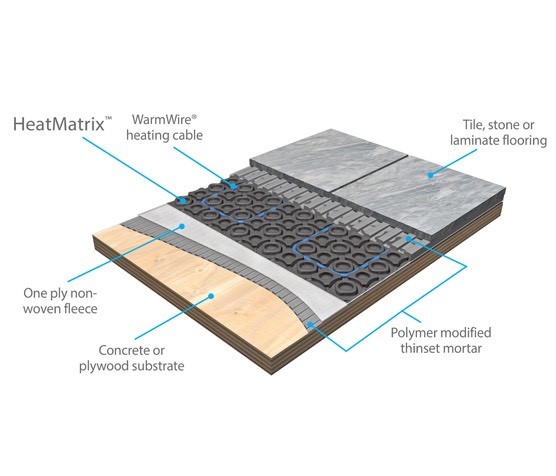Mastic is not recommended for high moisture areas.
Mastic for ceraamic tile over conkrete radiant floor.
Otherwise you do.
Such expansion and contraction can cause cracking.
Some lubricants can also be very helpful.
Ceramic tile adhesive is more appropriate.
It cannot cure too fast.
Mastic adhesive is very sticky making it well suited for vertical applications where tile may slide.
When you work on a concrete floor you can use a tool with a sharp blade that looks like a razor.
Since concrete flooring is homogeneous concrete alone is a poor choice for radiant heating.
Laminate flooring replicates the look of solid hardwood flooring or tile flooring without the expense.
Mastic is a vague term that generally refers to fast grab glues for tile.
Intermittent water exposure areas only.
In the past some professionals were using the so called cutback mastic adhesive to hold tiles.
Tile adhesive is expected to hold the tile in place not just for years but for decades without fail.
However radiant heat systems can be embedded in concrete floor slabs as long as a subsequent top floor covering such as tile is added.
If you attempt to set wall tiles using thinset without spacers you ll end up with a bunch of tiles that have slid into each other before the thinset has had time to set resulting in a giant mess.
How to install floor tile over infloor heat.
In addition tile flooring will not expand as it warms or contract as it cools.
Today the term mastic is infrequently used and it is difficult to find tile adhesives that go under the mastic banner at your local.
Stepping out of a shower onto a warmed tile floor in the winter is much better than stepping on cold tiles.
Radiant systems require layered flooring so that the tubing can be hidden under the top layer.
Whether wall or floor tile that tile needs to thoroughly stick to its base surface demands placed on tile adhesive are both extensive and steep.
Traditionally mastic was an organic plant based resin from the pistacia lentiscus shrub and its term is related to the word masticate due to its sticky gummy consistency.
When used to tile walls it s strength allows you to set tile and if you re good with eyeballing you can set tile without the use of spacers.
I am tiling mosaic and small pieces over what once was a concrete basement floor which on occasion in my city with all the rain can get flooded what was there when i bought the house 2 years ago was an asbestos linoleum 1 square very thin tile over a thin black mastic.
Mastic is a largely outdated term.
Mastic is porcelain glass or ceramic tile adhesive.
If you are pouring a concrete slab under.
That s not a problem with tile.

